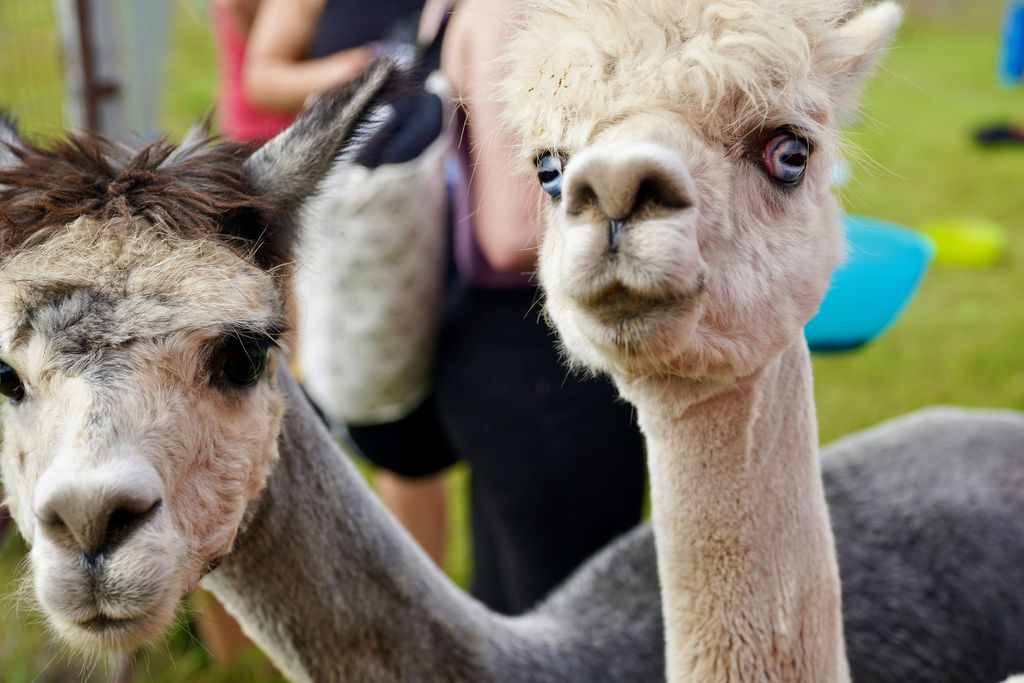Why Alpacas
“Quirky, inquisitive and endearing, raising alpacas is as close as I will ever get to having my own magical unicorns.”The alpaca is a species of South American camelid descended from the vicuña. This little ruminant is similar to, and often confused with, the llama. However, alpacas are noticeably smaller than llamas.
In America, this easy-to-care-for livestock is raised for it’s wonderfully sturdy and versatile fleece, also called “fiber”. There are two kinds of alpacas, the suri (pronounced: SOO-ree) alpaca, which sports long, silky, curly locks, and the huacaya (pronounced: wah-KY-ah) alpaca, which grows a thick, teddy-bear-like fleece. The fiber from both species of alpaca is used to make clothing, fiber arts, blankets, rugs hats and more.
Because alpaca fiber is hollow, it is both lighter and warmer than sheep’s wool and it is even water-repellent! It also lacks the lanolin coating of sheep’s wool, making it a great alternative for people with wool allergies.
“Quirky, inquisitive and endearing, raising alpacas is as close as I will ever get to having my own magical unicorns.”
Get To Know Us

Meet Ginger
Birthdate: 10/17/2004
At 21 years of age, Ginger is my oldest alpaca. She’s also the smallest alpaca on the farm, but don’t let her size fool you. This little blue-eyed cutie is my spiciest girl. She’s a bit grumpy and frequently let’s her herd mates know she is not happy with them. She stomps, grunts and groans about pretty much every thing they do. And if anyone does anything she doesn’t like, watch out! She is a deadly aim with her spit cannon and it’s never an airy spit. Little Ginger brings the big ammo every time! Thankfully she never spits at tour guests because they bring food, and she loves to eat. I am usually the one that get a face full of her anger because I am the one who has to treat her or work with her during shearing. Even though Ginger is spicy, she is still one of my favorites. I guess I am just a glutton for punishment.
Fun Fact: Ginger is what is known as a blue-eyed white (BEW) alpaca. BEWs carry the gene for deafness. Thankfully, Ginger is not deaf. For a long time, breeders passed over BEWs at breeding time to avoid getting a deaf cria (baby alpaca). But at some point we learned that it took a BEWs to get the popular grey alpacas. It turns out that if you breed a BEW to an animal with not even a spot of white, you can avoid deaf offspring and often get a pretty grey baby.


